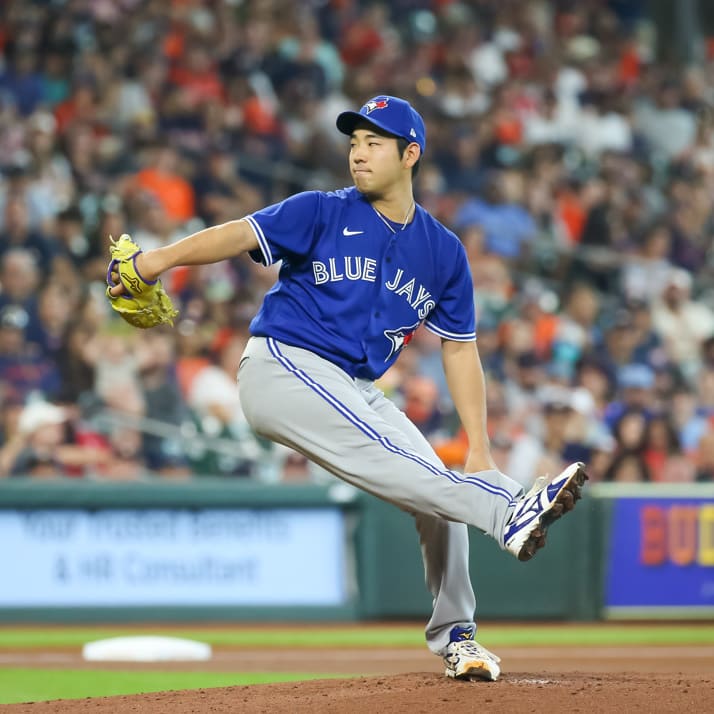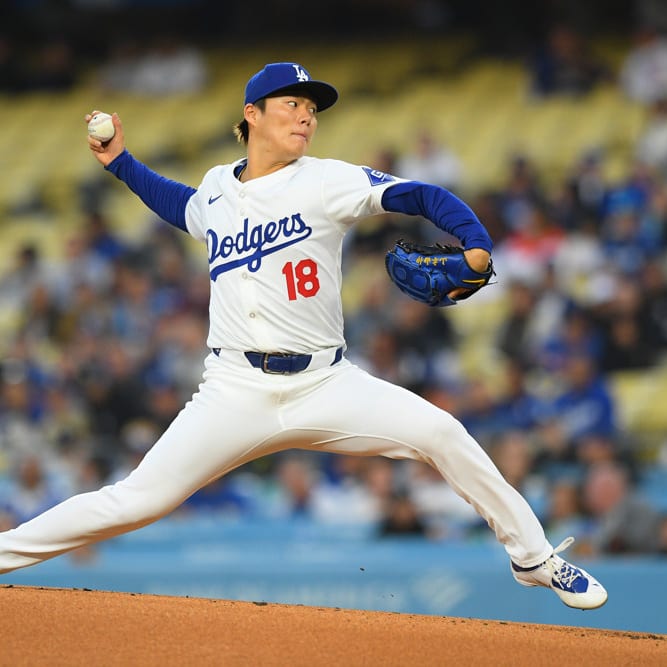This article is part of our The Saber's Edge series.
With daily fantasy becoming more and more popular, I increasingly hear about pitcher-hitter matchups. Such as "Player X is 6 for 12 against Pitcher Y with a home run and four RBI". Some people continuously quote these small data samples while others say these samples should be completely ignored. In a way, they are both right. A particular hitter can own a certain pitcher, but the reason why the hitter does better against this pitcher needs to be understood. Just using pitcher-hitter matchups in a vacuum is not the solution.
In daily fantasy baseball, everyone is looking for an edge, and I can see why people look to the pitcher-hitter matchup. Sometimes players may seem similar, so why not take the player who has done better against that day's pitcher?
The reason some roll their eyes on the subject is that all the research done on the subject shows no predictive value in these matchups. The best research comes from "The Book" written by Tom Tango, Mitchel Lichtman and Andrew Dolphin. They spent a whole chapter on the subject, and here is what they first found:
"Knowing a player will face a particular opponent, and given the choice between that player's 1,500 PA (plate appearances) over the past three years against the rest of the league or twenty-five PA against that particular opponent, look at the 1,500 PA."
So any sample based on 25 plate appearances is NOT predictive.
So, how about more plate appearances for the hitter
With daily fantasy becoming more and more popular, I increasingly hear about pitcher-hitter matchups. Such as "Player X is 6 for 12 against Pitcher Y with a home run and four RBI". Some people continuously quote these small data samples while others say these samples should be completely ignored. In a way, they are both right. A particular hitter can own a certain pitcher, but the reason why the hitter does better against this pitcher needs to be understood. Just using pitcher-hitter matchups in a vacuum is not the solution.
In daily fantasy baseball, everyone is looking for an edge, and I can see why people look to the pitcher-hitter matchup. Sometimes players may seem similar, so why not take the player who has done better against that day's pitcher?
The reason some roll their eyes on the subject is that all the research done on the subject shows no predictive value in these matchups. The best research comes from "The Book" written by Tom Tango, Mitchel Lichtman and Andrew Dolphin. They spent a whole chapter on the subject, and here is what they first found:
"Knowing a player will face a particular opponent, and given the choice between that player's 1,500 PA (plate appearances) over the past three years against the rest of the league or twenty-five PA against that particular opponent, look at the 1,500 PA."
So any sample based on 25 plate appearances is NOT predictive.
So, how about more plate appearances for the hitter against a particular pitcher? Over Bartolo Colon's never-ending career, 121 hitters have faced him more than 25 times. "The Book" moved the sample up to 60 plate appearances between a pitcher and a hitter, and here is what it found:
Sixty highly-targeted plate appearances are still not enough evidence to overwhelm the knowledge contained in 1,500 random plate appearances.
What this information says is the hitter will generally keep performing as he did against all pitchers. Twenty plate appearances are the about the equivalent of five games worth of stats for a hitter. Hopefully, fantasy owners understand any player can go through a bad five-game stretch, and our opinion of the player should not change.
How to Use Hitter vs. Pitcher Splits
I agree that just pitcher-hitter matchup information is useless. However, I do believe certain hitters perform better against a subset of pitchers in which the pitcher belongs. We are again looking at smaller samples of data, but it is more than the 20 to 60 PA used by people quoting off the direct pitcher-hitter matchups.
Here is a look at how Mike Moustakas has performed against Central Division foes Corey Kluber (fifth most PA for Moustakas against a single pitcher in his career) and John Danks (ninth most PA).
Kluber: .481/.533/.778, 1 HR
Danks: .150/.261/.250, 0 HR
Just seeing the names Danks and Kluber, one would expect a hitter to do better against Danks. The key to the difference is to move beyond just the names and into the skill sets of all three players. Looking at just the 3-for-24 numbers requires some effort and most people want the information to be easy to find. I find taking the extra step is the key to winning at fantasy sports. Everyone has the easy knowledge. Getting a little more information takes a bit more effort.
1. Handedness
Moustakas is a left-handed hitter and will probably struggle against left-handed pitchers (Danks) and hit right-handed pitchers (Kluber). My go-to spot for this information and the rest of the data I will use is the hitter's career splits page at Baseball-reference.com. My intuition was correct. In 1,444 PA against righties, Moustakas has a .705 OPS while his OPS is only .618 vs. lefties. Advantage Danks.
Most fantasy players have a good idea of the players with the most extreme righty-lefty splits and try to use them when available. Most of the time, these players are being platooned with another player, so they aren't available every day. The lack of playing time keeps their daily price low, but when they do play, they are almost a must start, like Scott Van Slyke and Ryan Raburn.
2. Power vs. Finesse Pitchers
The next stat I move to is the Power vs. Finesse pitchers. A little background needs to be provided to understand this chart. Here is the explanation of power and finesse pitchers from Baseball-Reference:
Power pitchers are in the top third of the league in strikeouts plus walks. Finesse are in the bottom third of the league in strikeouts plus walks.
Yep, that is confusing and I understand why it is that way instead of a set threshold for each value. The number of strikeouts and walks have changed over the years, so the values need to change. A quick rule of thumb for recent values is 25 percent K rate is the average for the Power group, 20 percent for the Average group and 15 percent for the Finesse group. Now, there is an expected difference in outcomes between the groups of pitchers with Power pitchers having the best results, and this difference is why Kluber is generally a better pitcher.
So looking at historical strikeout rates for the pitchers, Kluber (26.0 K%) will be considered a power pitcher and Danks (17.0 K%) a finesse pitcher. Moustakas has shown a tendency to hit finesse pitchers quite a bit harder than power pitchers (.767 vs .578) for about a 200-point expected difference. Advantage Kluber.
3. Groundball vs. Fly Ball
The final item I look at is the groundball–fly ball tendencies. I recently looked into using this stat more in this article here at Rotowire. The player's performance against these pitchers is located just below the Power-Finesse numbers at Baseball-Reference. Again, the pitchers are divided into thirds for giving up groundballs and fly balls. A simple rule of thumb is 40.0 GB% or less puts the pitcher in the fly ball group and more than 45.0 GB% puts the pitcher in the groundball group.
Kluber (47.0 GB%) falls into the groundball section while Danks is in the middle group (42.0 GB%). Moustakas has almost the same OPS against the middle and fly ball group (.650 vs .645). Now, Kluber falls into the groundball group, and Moustakas hits 280 points better against these pitchers (.828). Advantage Danks.
Putting it All Together
Finally, I like to then add up the differences. In a completely overly nerdy world, each of the values would be regressed a certain amount to the league average. Maybe I can tackle this subject at a later date, but I will go with the lazy route for now. A 90-point advantage for Danks in handedness, a 200-point advantage for Kluber in Power vs. Finesse and a 280-point advantage for Danks in Groundball vs. Fly ball.
We should expect to see Moustakas' OPS against Kluber to be about 170 points higher than against Danks. The reason isn't because Moustakas is better against just Kluber. It is because Moustakas does great against right-handed finesse pitcher with groundball tendencies. These reasons may help to explain why he has hit Doug Fister (RHP, 49.0 GB%, 16.0 K%) for a .360/.360/.520 line in 25 plate appearances.
Do not look at just hitter-pitcher results with no other information. Instead, look to see how the hitter does considering pitcher handedness, strikeout potential and groundball rate. Getting all the information on pitcher types can be key to making the correct play when others are just using pitcher-hitter matchups.










